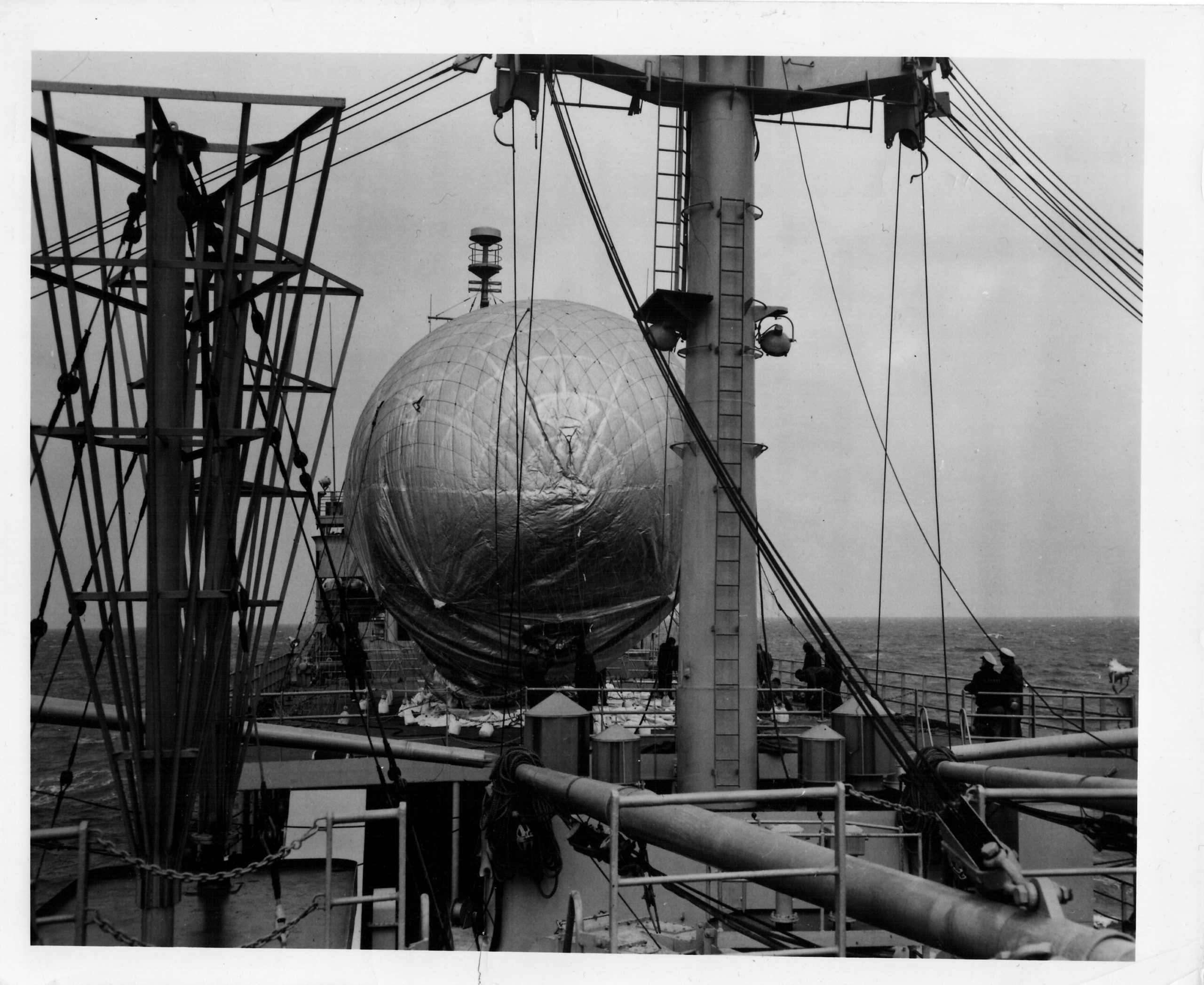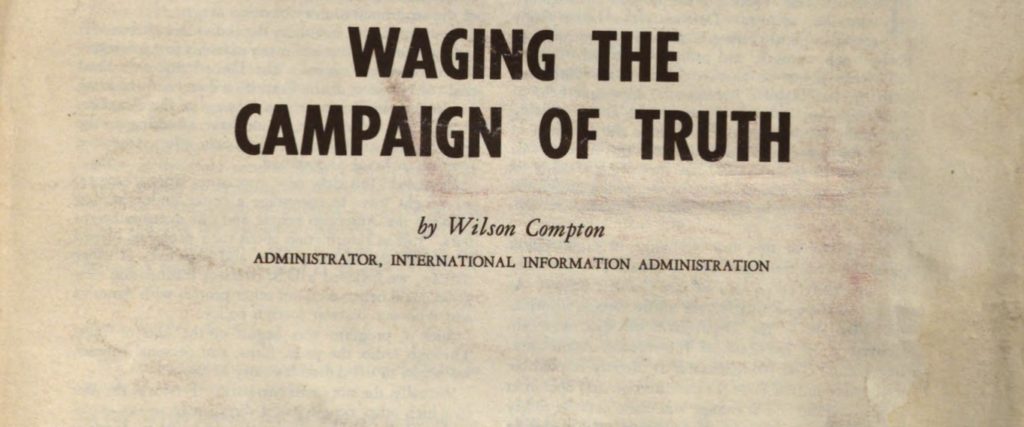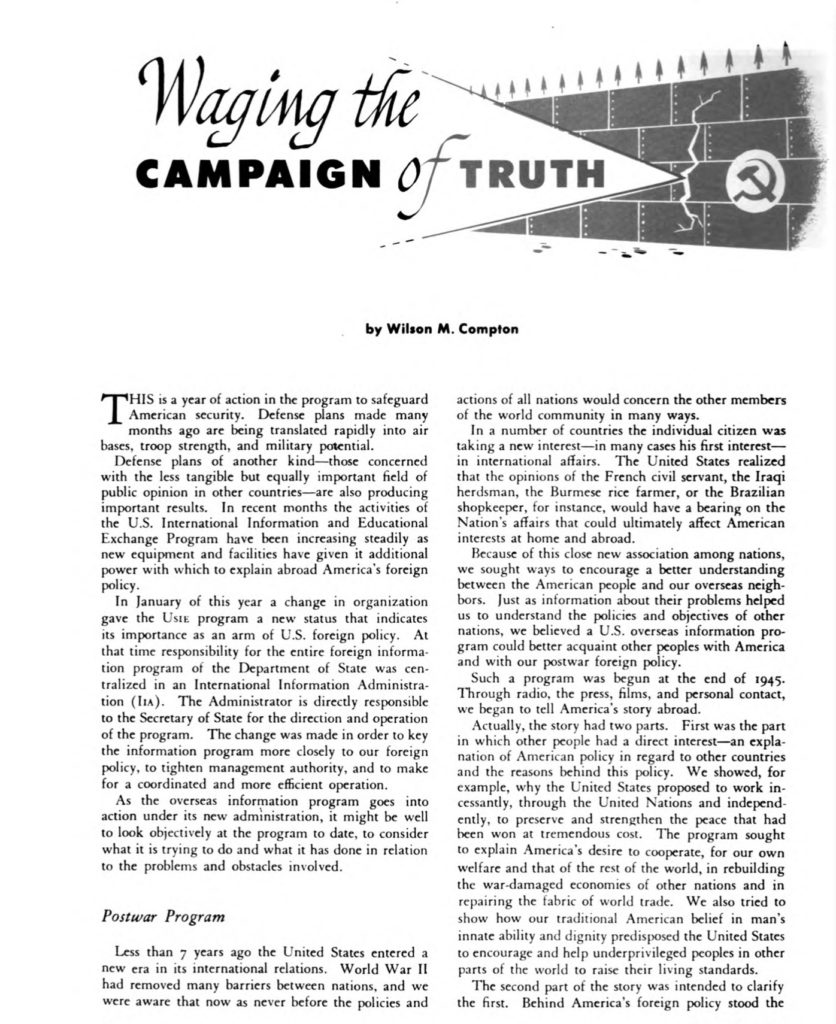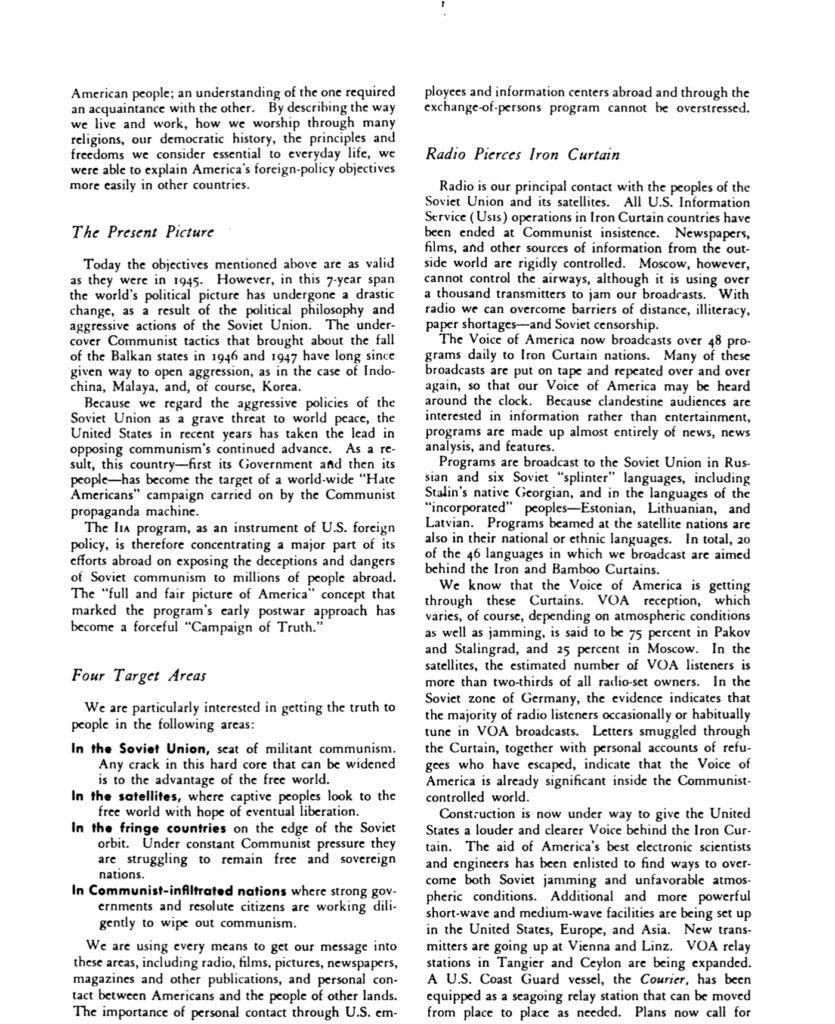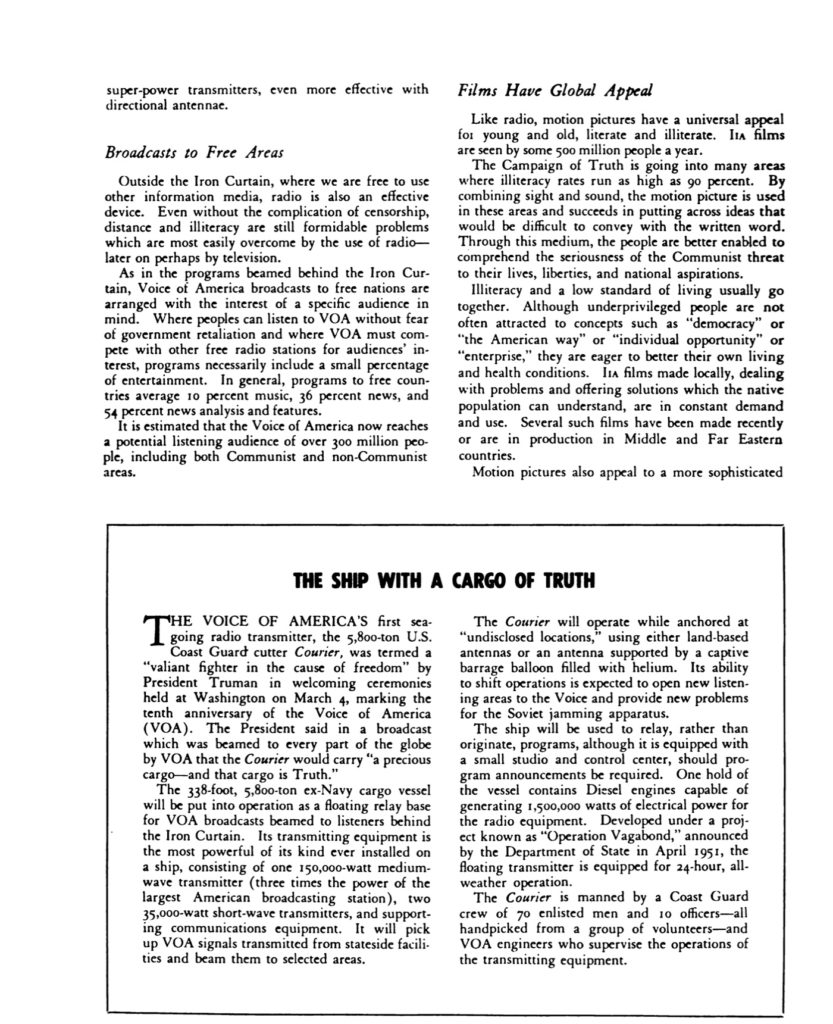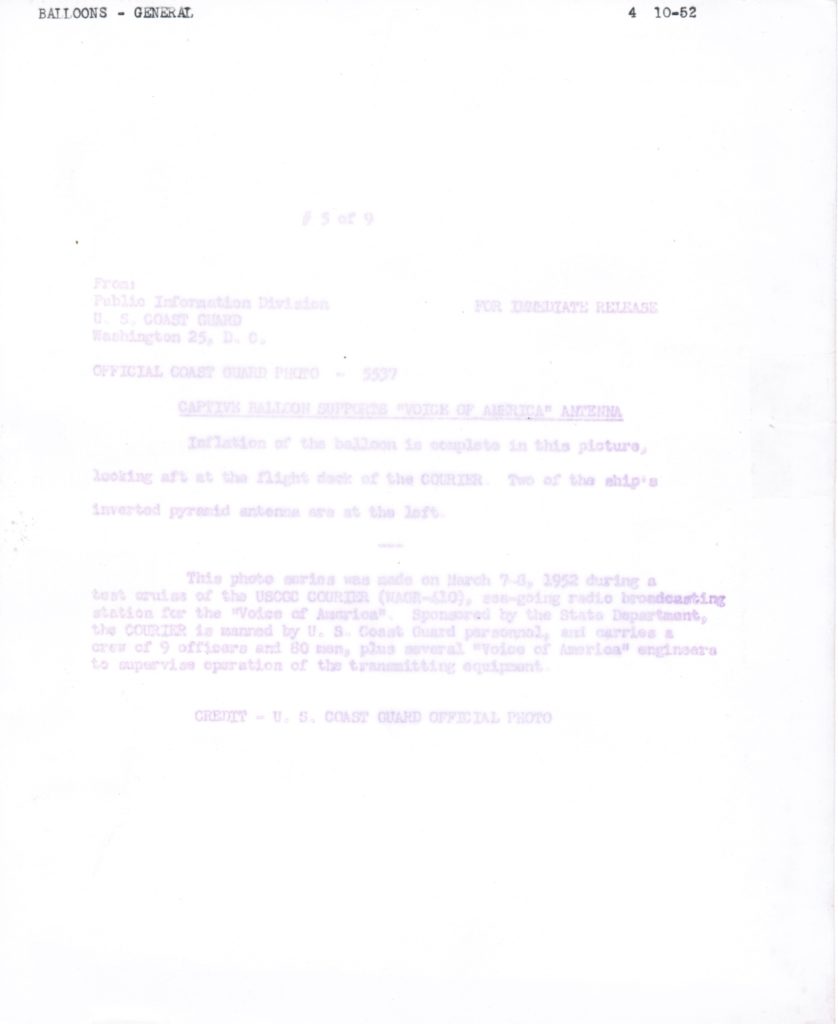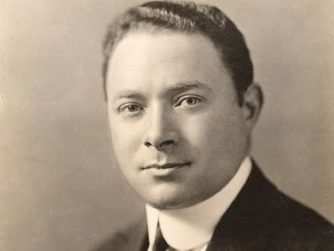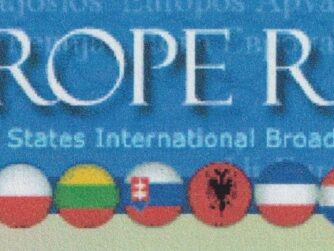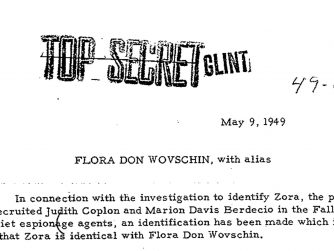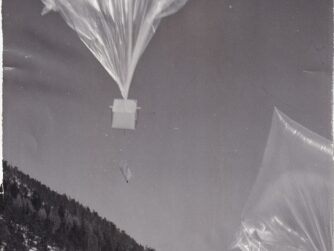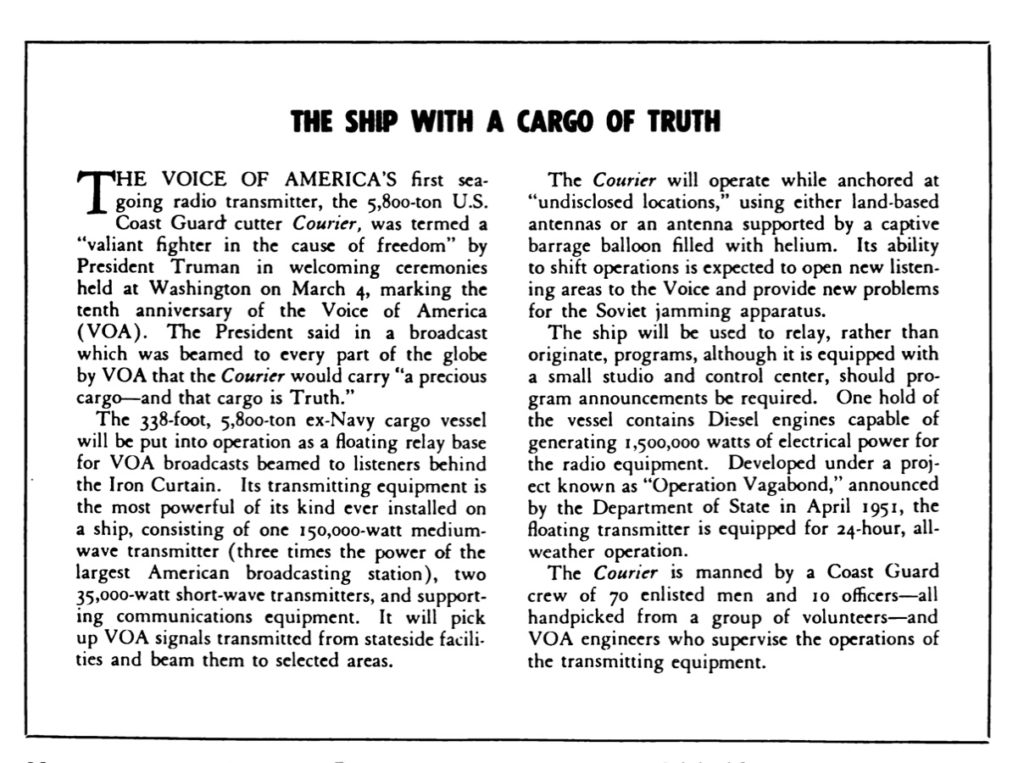
THE SHIP WITH A CARGO OF TRUTH
THE VOICE OF AMERICA’S first sea-going radio transmitter, the 5,800-ion U.S. Coast Guard cutter Courier, was termed a “valiant fighter in the cause of freedom” by President Truman in welcoming ceremonies held at Washington on March 4, marking the tenth anniversary of the Voice of America (VOA). The President said in a broadcast which was beamed to every part of the globe by VOA that the Courier would carry “a precious cargo—and that cargo is Truth.”
The 338-foot, 5,800-ton ex-Navy cargo vessel will be put into operation as a floating relay base for VOA broadcasts beamed to listeners behind the Iron Curtain. Its transmitting equipment is the most powerful of its kind ever installed on a ship, consisting of one 150,000-watt medium wave transmitter (three times the power of the largest American broadcasting station), two 35,000-watt short-wave transmitters, and supporting communications equipment. It will pick up VOA signals transmitted from stateside facilities and beam them to selected areas.
The Courier will operate while anchored at “undisclosed locations,” using either land-based antennas or an antenna supported by a captive barrage balloon filled with helium. Its ability to shift operations is expected to open new listening areas to the Voice and provide new problems for the Soviet jamming apparatus.
The ship will be used to relay, rather than originate, programs, although it is equipped with a small studio and control center, should pro gram announcements be required. One hold of the vessel contains Diesel engines capable of generating 1,500,000 watts of electrical power for the radio equipment. Developed under a project known as “Operation Vagabond,” announced by the Department of State in April 1951, the floating transmitter is equipped for 24-hour, all-weather operation.
The Courier is manned by a Coast Guard crew of 70 enlisted men and 10 officers—all handpicked from a group of volunteers—and VOA engineers who supervise the operations of the transmitting equipment.1
Radio Pierces Iron Curtain
Radio is our principal contact with the peoples of the Soviet Union and its satellites. All U.S. Information Service (USIS) operations in Iron Curtain countries have been ended at Communist insistence. Newspapers, films, and other sources of information from the outside world are rigidly controlled. Moscow, however, cannot control the airways, although it is using over a thousand transmitters to jam our broadcasts. With radio, we can overcome barriers of distance, illiteracy, paper shortages—and Soviet censorship.
The Voice of America now broadcasts over 48 programs daily to Iron Curtain nations. Many of these broadcasts are put on tape and repeated over and over again, so that our Voice of America may be heard around the clock. Because clandestine audiences are interested in information rather than entertainment, programs are made up almost entirely of news, news analysis, and features.
Programs are broadcast to the Soviet Union in Russian and six Soviet “splinter” languages, including Stalin’s native Georgian, and in the languages of the “incorporated” peoples—Estonian, Lithuanian, and Latvian. Programs beamed at the satellite nations are also in their national or ethnic languages. In total, 20 of the 46 languages in which we broadcast are aimed behind the Iron and Bamboo Curtains.
We know that the Voice of America is getting through these Curtains. VOA reception, which varies, of course, depending on atmospheric conditions as well as jamming, is said to be 75 percent in Pakov and Stalingrad, and 25 percent in Moscow. In the satellites, the estimated number of VOA listeners is more than two-thirds of all radio-set owners. In the Soviet zone of Germany, the evidence indicates that the majority of radio listeners occasionally or habitually tune in VOA broadcasts. Letters smuggled through the Curtain, together with personal accounts of refugees who have escaped, indicate that the Voice of America is already significant inside the Communist-controlled world.
Construction is now under way to give the United Stales a louder and clearer Voice behind the Iron Curtain. The aid of America’s best electronic scientists and engineers has been enlisted to find ways to overcome both Soviet jamming and unfavorable atmospheric conditions. Additional and more powerful short-wave and medium-wave facilities are being set up in the United Stales, Europe, and Asia. New transmitters are going up at Vienna and Linz. VOA relay stations in Tangier and Ceylon are being expanded. A U.S. Coast Guard vessel, the Courier, has been equipped as a seagoing relay station that can be moved from place to place as needed. Plans now call for supper-power transmitters, even more effective with directional antennae.2
Compton’s announcement in 1952 that America’s best electronic scientists and engineers were enlisted to help with the construction of VOA’s transmitters was hardly accurate. After he was grilled by Senator Joseph McCarthy about problems with the Voice of America engineering projects and admitting that a “good deal of waste” was associated with them, including the handling of the Courier project, Compton resigned as IIA administrator on February 18, 1953. He was not responsible for the initial planning and had himself uncovered some of the waste and replaced some of the managers, but the hearings showed an organization in a managerial disarray with a weak program against the Soviet Union.3 Compton canceled or modified some of the most mismanaged transmitting projects, but the Courier was already put to work in a Greek port on the Mediterranean Sea and operated for twelve more years at the same location.
In his “Launching the Campaign of Truth: First Phase” report to the U.S. Congress, Secretary of State Dean Acheson reported no increases in VOA broadcasts to Russia, Ukraine, Poland, Czechoslovakia, Bulgaria, Romania, and Yugoslavia between July 1 and December 31, 1950.4 VOA broadcasts in Mandarin and Cantonese to China increased by only 15 minutes each in 1950 while the war in Korea supported by both Russia and China was claiming thousands of American lives. President Truman may have wanted action from the Voice of America, but he did not get it. What he got were poorly planned and mismanaged transmitter building projects plagued by cost-overruns and construction delays. By July 1, 1951, the VOA Russian broadcasts were still only 2 hours daily, and VOA Ukrainian 30 minutes daily, with no airtime increases. VOA Polish and program to Czechoslovakia gained only 15 more minutes of airtime each.
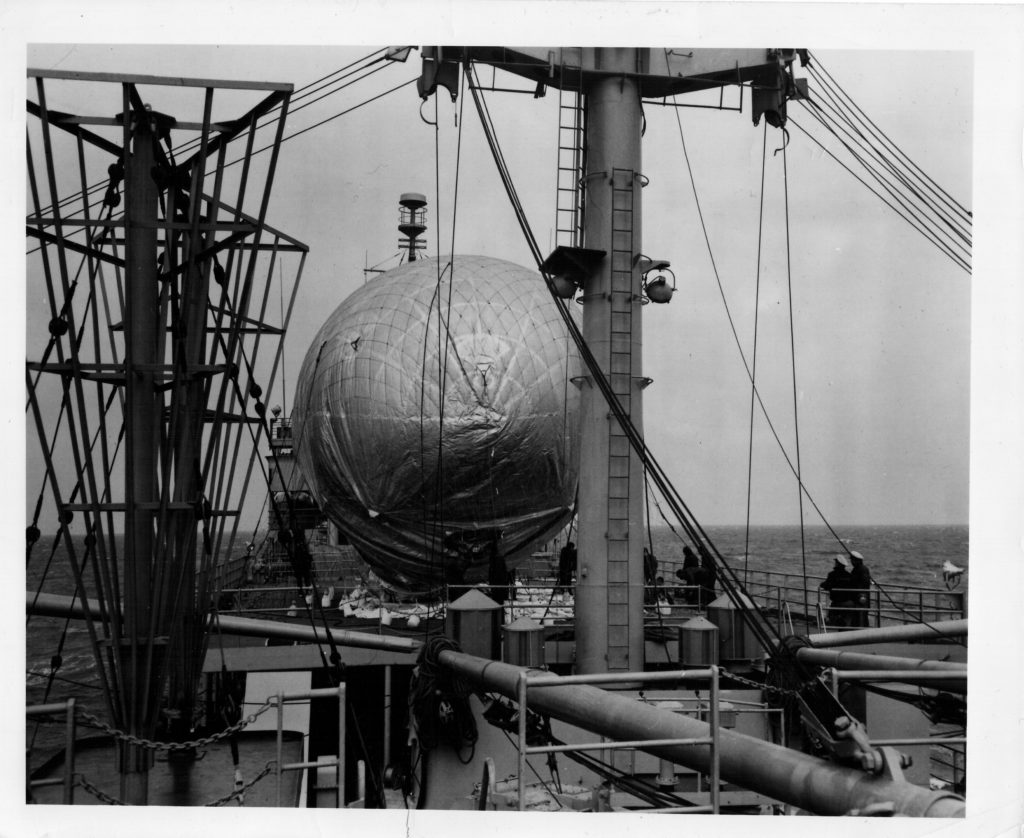
USCGC Courier – Voice of America Radio Transmitting Ship (1952–1964) – A Fuller Story of the ‘Campaign of Truth’
USCGC Courier – Voice of America Radio Transmitting Ship – Reception Problems and False VOA Audience Claims PART I
USCGC Courier – Voice of America Radio Transmitting Ship – Reception Problems and False VOA Audience Claims PART II
USCGC Courier – Voice of America Radio Transmitting Ship (1952–1964) – A Fuller Story of the ‘Campaign of Truth’ PART III
NOTES:
- Wilson M. Compton, Administrator, International Information Administration, the Department of State, “Waging the Campaign of Truth,” Field Reporter, July-August 1952, pp. 9-10. https://hdl.handle.net/2027/uc1.d0004680286?urlappend=%3Bseq=4.
- Wilson M. Compton, Administrator, International Information Administration, the Department of State, “Waging The Campaign of Truth,” Field Reporter, July-August 1952, pp. 9-10. https://hdl.handle.net/2027/uc1.d0004680286?urlappend=%3Bseq=4.
- David F. Krugler, The Voice of America and the Domestic Propaganda Battles, 1945-1953 (Columbia: University of Missouri Press, 2000), 194.
- United States. Department of State. (1951). Launching the Campaign of Truth: First Phase. Sixth Semiannual report of the Secretary of State to Congress on the International Information and Educational Exchange Program, July 1 to December 31, 1950. (Washington: Dept. of State, Division of Publications, Office of Public Affairs) https://hdl.handle.net/2027/umn.31951d03562370p?urlappend=%3Bseq=58.


